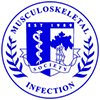Early Detection of Biofilm by Measuring the Impedance BetweenInterdigital Electrodes
Authors: Jahoda D, Judl T, Landor I, Pokorný D, Sosna A. Charles University in Prague and University Hospital Motol, Prague, Czech Republic
Title: Early Detection of Biofilm by Measuring the Impedance BetweenInterdigital Electrodes
Background: Infection in orthopedic patients is a major problem not only because of rapid formation of biofilms on the surface of the extraneous material replacements, but also for the difficult diagnosis.
Hypothesis/Purpose: Choice of measured quantities and types of sensors is very difficult. The best option seems to be a combination of variables, statistically increasing detection accuracy.
Promising method seems to be detection of a biofilm by measuring the impedance between interdigital electrodes.
Methods: Our research primarily deals with an in vitro detection of a biofilm by a KB-12 sensor measuring the impedance between interdigital electrodes. The electrodes are made of platinum applied on a ceramic substrate and have an interdigital arrangement. Interdigital electrodes are formed by 75 pairs of electrodes with a gap-electrode spacing of 15 µm. Electrode length is 3mm. For cultivation is used the nutrient solution LB medium. The impedance is measured in AC circuits. The measurement was performed at multiple frequencies ranging from 18 Hz to 200 kHz. For measurements we used a sinusoidal voltage with an amplitude of 10mV.
First, we measured the impedance in LB medium without bacteria. Then, we measured the impedance by leaving the sensor in a solution of 10ˆ9 CFU/ml of bacteria with the gradual sedimentation and cultivation after 12 hours.
Results: The impedance drops down in a logarithmic scale with increasing frequency at both beginning of the measurement and after 12 hours of the measurement. After injection, the impedance started to increase from the reference value, which was measured immediately after aplication of the bacterial solution into the dish at the start of the experiment. The bacteria covered the surface and the cells influenced the intensity of the AC current. The impedance varied about 10 percent in both cases, demonstrating the reproducibility of the setup.
Discussion: Impedance is one of the several variables, which we plan to acquire from the prosthesis area. The telemetric data transmission, completion and subsequent evaluation of the results will enable us to obtain information that lead to early detection of infection from an implanted endoprosthesis without damage a skin cover.
Conclusion: According to our results the change of impedance is a significant factor for detection of a biofilm and bacterial colonization of the prosthesis.

